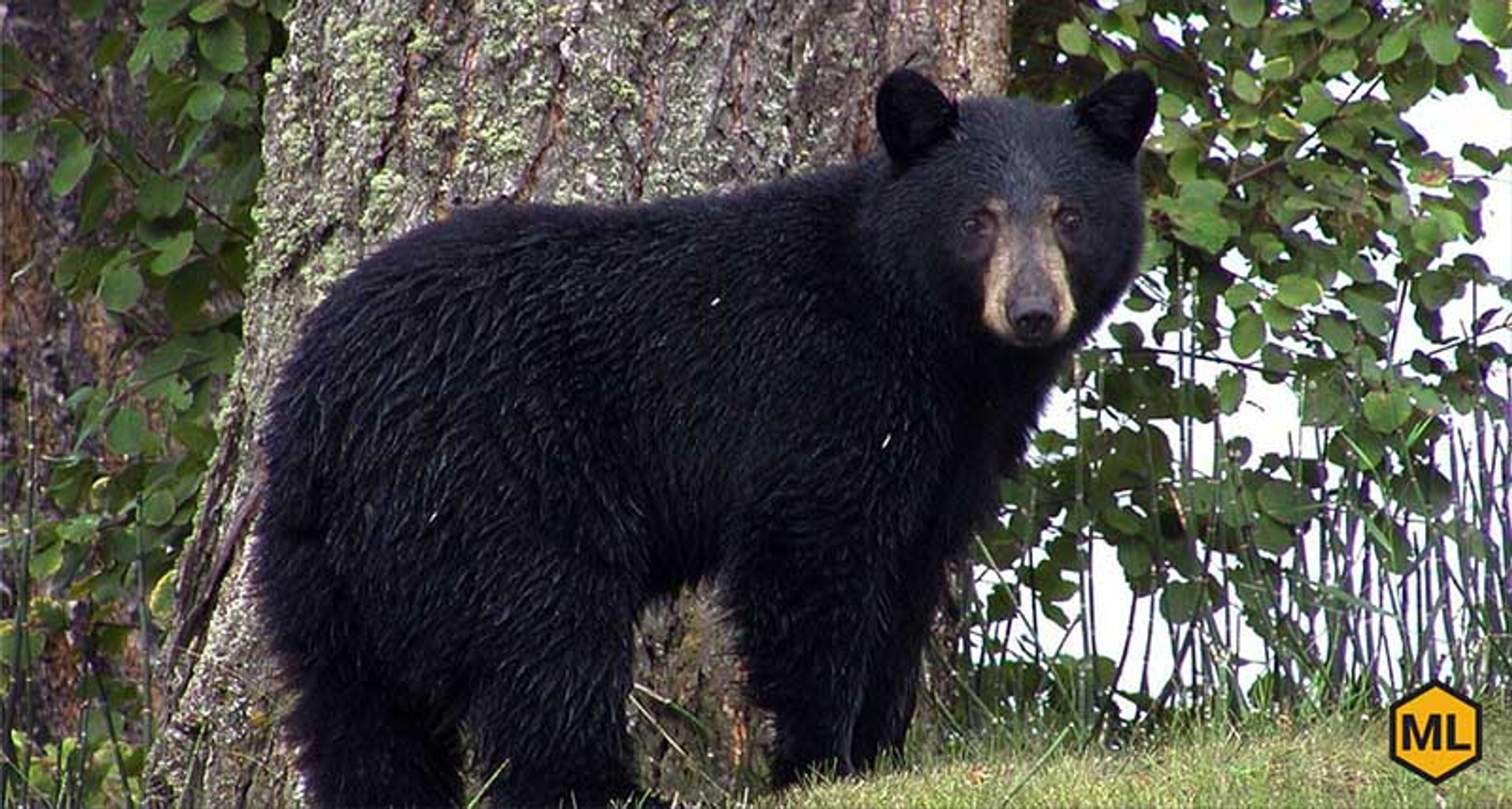Hive Colors & Bears
By Charlotte Hubbard
Recently, as I put paint on my hands, jeans, shoes, dog and oh, occasionally a hive body, I thought of a question “newbees” often ask, “How do you decide what color to paint your hives?” After I answer that question for them, a second one will quickly follow: “But aren’t hives supposed to be white?”
Folks, I will answer the second question first. No, hives aren’t supposed to be or required to be white. I do understand, though, why many non-beekeepers are confused that there are non-white hives.
I once also thought bees were always kept in white hive boxes. In the children’s literature I devoured through my thick glasses, with a flashlight under the covers at night, the hives pictured were always white. Decades later I read different story books to my children. In those, the hives were also always white.
Of course, in the story books, the always-merry beekeepers were happily surrounded by only two or three equally smiley bees, instead of hundreds of crazed insects like I occasionally experience. There also are no mites in those cheery stories, but there are other threats, like bears in striped pants on their way to rob hives.
Now then, that first question, about how do I decide what color to paint my hives…
When my late husband Tom began keeping bees, he read that light, pastel colors were preferred. He painted one of his first two hives a subtle lilac, the other a warm, golden honey color. Coincidentally, those are about the colors of our local school system.
In what I now know is truly miraculous, my late husband did nothing to those hives after he installed the packages (including never removing the top feeders), and the bees overwintered just fine. Thinking this beekeeping thing this was super-easy, he ordered three more packages for the following spring, and thus had three more hives to paint. He selected two colors representing where our two oldest kids were going to college, which added orange and light blue to the apiary, along with a pink.
People couldn’t help notice our apiary disguised as a tropical fishing village, and became curious. Tom jokingly explained we were painting hives to match the kids’ college colors (plus pink), in the hopes that maybe someday, when the apiary became famous, the colleges would pay a small fee to have their logo painted on the side of their hive. We knew the colleges had money; we were steadily writing checks to them.
Speaking of colors, the next year was the one marked bright red in our family budget. Due to poor family planning, it was the year when two of three kids would be in college at the same time—with the oldest child having moved on to bank-account-draining grad school.
With our baby entering college, we felt the need to have bees in a hive of her collegiate colors, like we did for her older siblings.
But, with our baby entering college, we didn’t have many extra dollars for bees and a hive. “Luckily” she chose to go to the University of Michigan like her big brother did. I say “luckily” because that meant we already a hive painted the appropriate color (Go Blue!)
And such luck! Not only did we save money by not getting another package of bees and a hive, but being able to send both their tuition payments with just one stamp really diminished the financial burden of them both attending the Harvard of the Midwest. (Yes folks, there’s sarcasm dripping all over that. You can decide where I meant to put it.)
So, as I tell newbees, that’s how we decided what colors to paint our hives. My new hives this year are a cherry red, a honey gold, and hunter orange. If you’d like to see those colors, feel free to stop by my apiary, or look at my shoes, my watch band, or my dog. Surprising how hard it is to get paint off of from where you don’t want it.
Seemingly the only rule about hive colors is the same rule our son uses for his laundry: designs, fluorescents, darks, pastels, patterns—anything goes and it can all go together. (Guess they don’t teach laundry at U of M.)
If you want hives of many colors, you may have them. You’re only restrained by the number of colors. By the way, there is no limit to the number of colors. Color, or symbols, or numbers—some means of identification for each hive is helpful. Bees like to be able to readily distinguish their hive from others when coming in to land, overloaded with pollen. Readily identifiable hives are also helpful to us two-legged critters, so we know where to record the information about them in the excellent logbooks we all keep. Right, beekeepers?
Because our hives were largely painted collegiate colors, we called them “The Michigan Hive”, or “The Oregon State Hive.” We could’ve called those honeybees “The Wolverines” or “The Beavers,” but that would be, well, bee-littling to the winged insects. Bring on any sport’s mascot—tigers, lions, cowboys, bears. Enraged honeybees will always win.
Unless, of course, they’re dealing with bears in striped pants.

